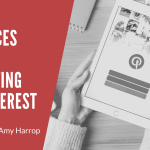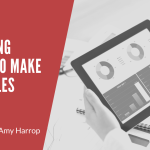If you use social media at all, you know about hashtags. Prefaced by the # symbol, they can be businesslike or playful – and either way, they’re the key to people finding your shop and products on Twitter, Instagram, and Pinterest.
Are you using the right hashtags? The short answer is that you may not be – and if you’re not, it could be holding you back from connecting with your target audience and increasing your profits. With that in mind, here’s your guide to choosing and using the right hashtags.
Basic Hash Tagging
Let’s start with a few basic rules for using hashtags before we get into the specifics of how to choose hashtags to use on social media.
- Hashtags should have no spaces between words and contain no punctuation or symbols.
- Shorter hashtags are easier to read and more effective than long hashtags.
- Using too many hashtags can make your posts look like spam.
A good rule of thumb is to use between two and five hashtags. Using more than five can be overwhelming. On Twitter, it also eats way into your 280-character limit.
Types of Hashtags to Use
When it comes to choosing hashtags, you have multiple choices. Let’s review some of the different types of hashtags.
- Community hashtags are hashtags that are widely used and accepted by social media users. These include things like #TBT (Throwback Thursday) and #picoftheday.
- Informational hashtags are hashtags that help people find relevant content. For example, if you were posting pictures of your journal pages, you might use #bulletjournal or #plannerinspiration to make sure that the people in your target audience see your images.
- Event hashtags focus on a specific event, whether it’s a business conference or a holiday. Examples might be #wedding or #Christmas. Keep in mind that event words can be added to other words to make unique hashtags. Examples might include #destinationwedding or #ChristmasInJuly.
- Branded hashtags are hashtags that use a company’s brand name or a specific product name to target an audience that already knows about your products.
We’ll talk more about how and when to create a branded hashtag in a minute.
How to Do Hashtag Research
Before you choose hashtags to use, you’ll need to do some hashtag research. The good news is that it isn’t difficult to do.
Let’s start with the easiest option. If you want to find good Instagram hashtags, one of the simplest ways to do it is to use the search function to look for products like yours. For example, a quick search of wedding planning reveals that the hashtag #weddingplanning has nearly nine million results. Clicking on a post can reveal dozens of additional hashtag ideas, including fun options such as #wedspiration and #gettingmarried.
Another option is to use a hashtag research tool. There are plenty to choose from. Hootsuite allows you to manage all your social media from one place and it includes a well-regarded hashtag research tool. Hashtagify is another popular option that can help you find the best hashtags to use on Instagram and Twitter.
You can also look at Etsy and Shopify shops to see which words shop owners are using to describe their products. Keywords and hashtags have a lot in common and you can easily take the same words you use in your product descriptions and truncate or rearrange them to come up with hashtags.
Ideally, you want hashtags that are popular but specific. You might have a hard time getting any attention using a broad hashtag such as #wedding because of the sheer volume of posts that use it. (There are more than 207 million Instagram posts with the #wedding hashtag as of this writing.) However, something more specific, such as #beachwedding or #DIYwedding might serve you better by connecting you with a more approachable audience.
Should You Create a Branded Hashtag?
We already talked about branded hashtags, which are extremely useful if you want to allow people who already know about your brand to find your products on Instagram or Pinterest. But is it worth creating one if you’re just getting started?
The short answer is yes. Creating a branded hashtag now is an effective way to link all your products together. For example, let’s say you have a printable wedding invitation that you want to promote. You choose these hashtags:
- #printableweddinginvitation
- #DIYwedding
- #picoftheday
So, what you’ve done so far is use a hashtag that identifies your product, one that targets people who are looking for DIY wedding solutions, and one that helps you to connect with the social media community at large. What happens if you add a branded hashtag?
Well, if you’ve got other wedding-related products that you’ve already posted on your feed, adding a branded hashtag will make it possible for someone viewing your invitation picture to view every other product you’ve posted with that hashtag, with a single click.
Ideally, your branded hashtag should include the name of your website or shop. It doesn’t need to be the same as your Instagram handle to be effective, but it can be the same if that’s what you think will get you the widest possible exposure.
What’s the Right Mix of Hashtags?
We’ve already hinted at this, but let’s talk about the types of hashtags you may want to combine to get the biggest audience for your products.
- A branded hashtag.
- A product-specific hashtag. For example, #dinoshirt or #bridesmaidgift will help people who are on the lookout for a T-Rex top or a gift for their wedding attendants to find you.
- A more general hashtag that encompasses your product. For example, if you’re selling POD kids’ apparel, then a hashtag like #backtoschoolwardrobe might be a good choice.
- A community hashtag. Don’t overuse these, but every once in a while hopping on the community hashtag train can be effective.
You can add additional hashtags and some people use dozens. However, keep in mind that using too many can be overwhelming and people are likely to ignore most of them when they see your posts. If you create a branded hashtag, make sure it’s in the top three hashtags you use.
Conclusion
Effective hashtag use requires a combination of research and common sense. The tips we’ve included here will help you to identify and create the hashtags that will help you grow your brand on social media.
Do you need help turning your brand into a social media sensation? Click here to work with me!




Leave a Reply